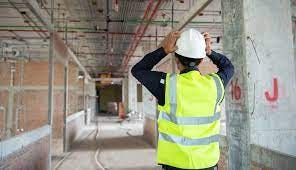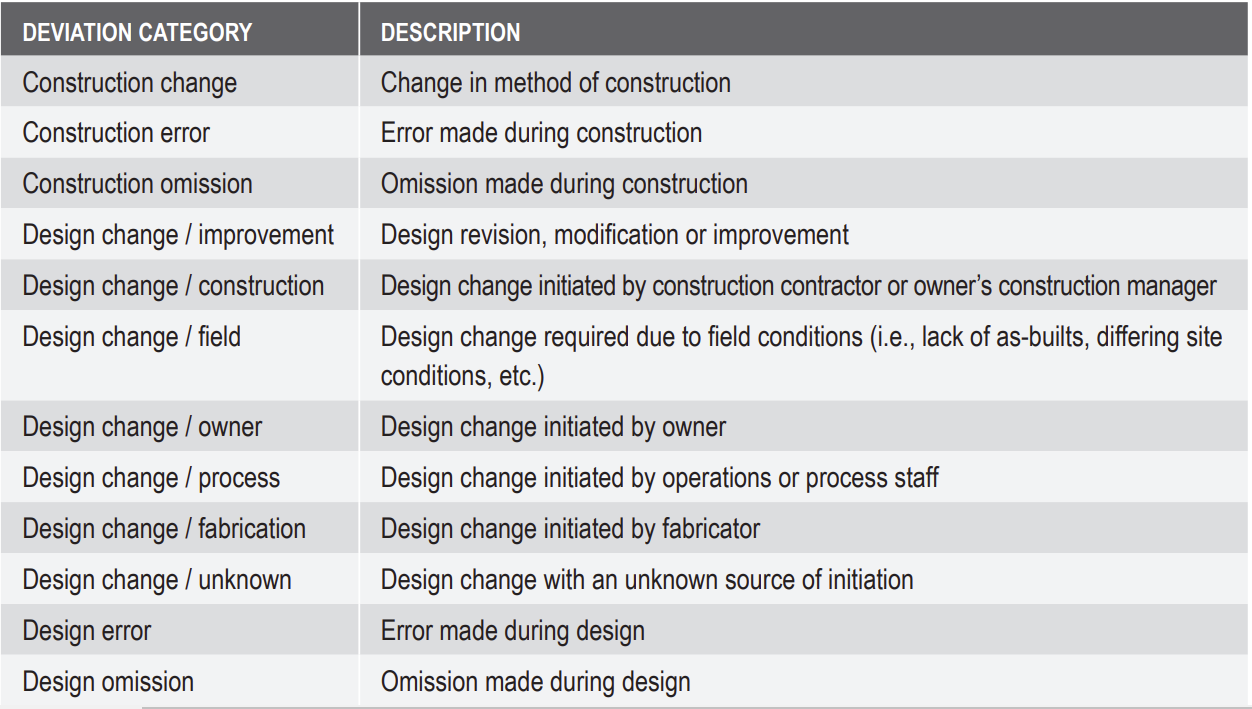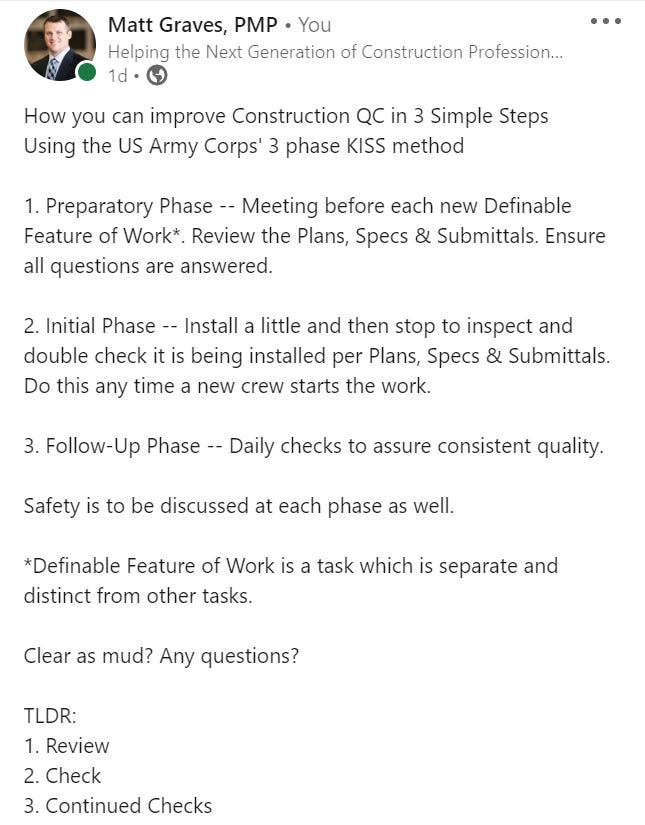Hey! Happy Friday! Matt here. Welcome to the Construction Curiosities newsletter. Especially to the New Subscribers. We had a 37% increase in subscribers since last week! Thank you! If you get value from this newsletter, please help us continue to grow and share with your friends, colleagues, social media networks, uncle’s dog, etc.
This weekly Newsletter will explore my Curiosities around the Construction Industry. It is meant for anyone and everyone that works in the industry, ancillary professions, or is simply Curious about Construction.
The real value in this newsletter however isn’t necessarily what I think and say, its the conversation by the group. I hope you will join the conversation on constructionyeti.substack.com !
Summary
This week we will look at:
One Curiosity: National Rework Cost
One Article: Japanese Plan to Solve Labor Shortage
One Video: 7 Things You Didn’t Know
One Quote: The 90/ 90 Rule
One Meme: A Foot of Sun
One Curiosity
“While there never seems to be enough time to do work right the first time, there’s always enough time to do it over again.”
Rework. The bane of every construction site, budget and schedule.
The Construction Industry Institute (CII) defines rework as “activities in the field that have to be done more than once in the field or activities which remove work previously installed as part of the project.” A simple definition for a complex problem. We have all seen it happen on every project. Time and time again. I’m pretty sure if Benjamin Franklin was in the construction industry his old quote would be “…in this world nothing can be said to be certain, except death, taxes and construction rework.”
I’m always curious and googling stuff (hence the genesis of this newsletter) and a while back I got to wondering how much money the U.S. Construction Industry spends on rework. Not surprisingly I’m not the only one wondering this. There’s actually quite a few studies dedicated to it.
A few studies have agreed that the average is about 5% of the project contract value for direct costs and about 9% of the total project cost when you factor is indirect costs (field overhead).
I would argue that there are costs that aren’t even being tracked that should calculate into this. Time and effort spent by the Architects, Engineer, Construction Managers, Owners, Inspectors, Vendors, etc to stop, think and talk about each one of the issues. In addition there is a belief that 38% of rework goes unreported. The guys in the field just fix it and move on.
But don’t think I’m trying to paint a picture that all rework is because of a contractor screw up. A 2012 study by Navigant Construction forum included this list of causes:
These studies aren’t all doom and gloom. They provide some ways that rework could be avoided. For instance, the Navigant Construction Forum study lists 7 remedies to decrease rework:
Use of Building Information Modeling (“BIM”) and Virtual Design & Construction (“VDC”)
Early and Continuous Stakeholder Involvement
Design Freeze Prior to Start of Construction and Delegation of Authority
Biddability Review
Constructability Review
Operability Review
Change Order Review
I also have a deep dive into the US Army Corps of Engineers’ QC process planned in a future newsletter but here it is in a nutshell:
So back to my original curiosity that lead me down this rabbit hole. How much money does the U.S. Construction Industry spend on rework annually?
If we take the conservative estimate of 9%, multiply that by an average of $1.15 trillion annual construction spending in the U.S. and we get $103.5 billion dollars.
That’s the GDP of Puerto Rico. 🤯
Links to relevant studies if you need bed time reading material:
THE IMPACT OF REWORK ON CONSTRUCTION & SOME PRACTICAL REMEDIES
Measuring and Classifying Construction Field Rework: A Pilot Study
Cost Management in Construction Projects: Rework and Its Effects
One Article
For tech-focused labor solutions, US contractors should look to Japan
“The Japanese government’s program, which focused on attracting a younger construction workforce via tech adoption, could provide a roadmap to fixing the American labor shortage, says one expert.”
One Video
One Quote
“It takes 90% of the time to perform the first 90% of the work and the other 90% of the time to perform the last 10%”
- Anonymous Construction Manager
One Meme
Another heat wave is here. Y’all be careful out there and drink some water.
Thank you for reading! Head to the Substack post page to join the conversation.
Let me know in the comments or send me an email (matt@constructionyeti.com) what you liked, didn’t like, want to see more of in the future, or have suggestions! Look forward to hearing from you.









New subscriber and I love it, although it appears primarily commercial construction? I am in the homebuilding world but it appears so many of the issues are the same. There have not been good studies of rework in new home construction and I am in the process of putting together one with a strong University construction program. One thing I have studied a great deal and have nearly 5,000 data point on is "Wasted (or what should have been unnecessary) Trip Cost." We know that averages close to $15K per house very conservatively, and all-in including builder overhead and indirect is more like $20K. With construction hard cost averaging around $200K per unit these days (on a $400K home) that is 10%, So my question is, does your 9% number include the cost of extra trips to sites to do this work? I realize that on large commercial sites, many of the trades are there most days so on the surface it is not as big a deal, but since rework delays completion, by definition there are more trips. Please advise!